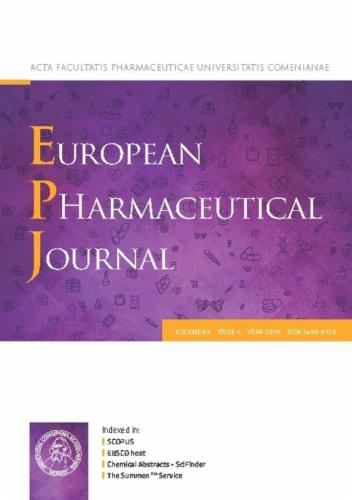Dumping test: In vitro predictive tool for bioequivalence of Telmisartan formulations
IF 4.3
3区 医学
Q1 PHARMACOLOGY & PHARMACY
引用次数: 0
Abstract
Background
The "dumping" test is a simple dynamic dissolution methodology widely studied as a useful tool in bioequivalence trials for class II drug products.
Objective
This study aimed to evaluate the dumping test as an in vitro method to predict the in vivo behavior of Telmisartan formulations. A one-step level A IVIVC was developed for three immediate-release formulations (Micardis® as the reference and two generics, X1 and X2) using this transfer model.
Methods
Dumping tests were performed by placing drug products in 20 mL of HCl 0.01 N and sampling for 20 min at 37 °C in an orbital shaker. The contents were then transferred to a USP 2 apparatus with 480 mL of pH 6.8 phosphate buffer, maintaining 37 °C and 50 rpm stirring. Bioequivalence was assessed using the similarity factor f2.
Results
The f2 values were 46.47 between REF and NBE (non-similar) and 57.43 between REF and BE (similar). The IVIVC study confirmed a level A correlation, supporting the in vitro dissolution results.
Conclusions
The dynamic dissolution dumping test proved to be a valuable tool for studying the complex in vivo dissolution process of Telmisartan immediate-release formulations.

倾倒试验:替米沙坦制剂生物等效性的体外预测工具。
背景:倾销试验是一种简单的动态溶出度试验方法,在二类药品的生物等效性试验中得到了广泛的研究。目的:评价倾倒试验作为预测替米沙坦制剂体内行为的方法。利用该转移模型,开发了3个速释制剂(Micardis®为参比制剂和2个仿制药X1和X2)的一步A级IVIVC。方法:将药品置于20 mL HCl 0.01N中,在37°C的轨道振动器中取样20分钟,进行倾倒试验。然后将内容物转移到含有480 mL pH 6.8磷酸盐缓冲液的USP 2仪器中,保持37°C和50 rpm搅拌。采用相似因子f2评价生物等效性。结果:REF与NBE的f2值为46.47(不相似),REF与BE的f2值为57.43(相似)。IVIVC研究证实了a级相关性,支持体外溶出结果。结论:动态溶出度倾倒试验是研究替米沙坦速释制剂体内复杂溶出过程的有效工具。
本文章由计算机程序翻译,如有差异,请以英文原文为准。
求助全文
约1分钟内获得全文
求助全文
来源期刊
CiteScore
9.60
自引率
2.20%
发文量
248
审稿时长
50 days
期刊介绍:
The journal publishes research articles, review articles and scientific commentaries on all aspects of the pharmaceutical sciences with emphasis on conceptual novelty and scientific quality. The Editors welcome articles in this multidisciplinary field, with a focus on topics relevant for drug discovery and development.
More specifically, the Journal publishes reports on medicinal chemistry, pharmacology, drug absorption and metabolism, pharmacokinetics and pharmacodynamics, pharmaceutical and biomedical analysis, drug delivery (including gene delivery), drug targeting, pharmaceutical technology, pharmaceutical biotechnology and clinical drug evaluation. The journal will typically not give priority to manuscripts focusing primarily on organic synthesis, natural products, adaptation of analytical approaches, or discussions pertaining to drug policy making.
Scientific commentaries and review articles are generally by invitation only or by consent of the Editors. Proceedings of scientific meetings may be published as special issues or supplements to the Journal.

 求助内容:
求助内容: 应助结果提醒方式:
应助结果提醒方式:


